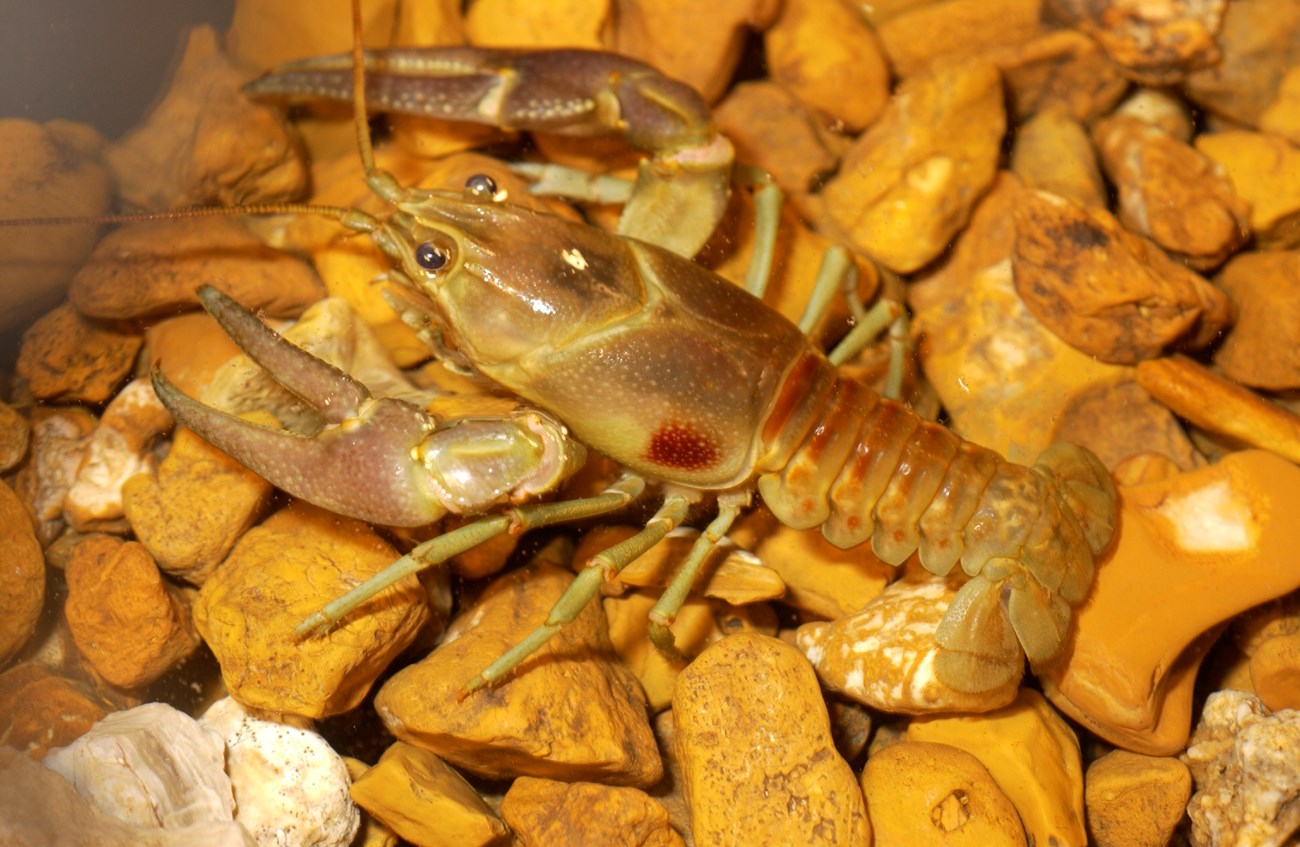Prevention, ultimately, is the best method of control.
Article
Invasive Rusty Crayfish

Missouri Department of Conservation
What are they?
Rusty crayfish (Orconectes rusticus) are a species of freshwater crustacean that are native to the southern U.S. they are, however, invasive in Minnesota and Wisconsin, and it is suspected that they were transported and released by anglers who were using them as bait.
The rusty crayfish shares the water with a number of native look-alikes, most notable of which are the virile crayfish (Orconectes virilis) and the northern clearwater crayfish (Orconectes propinquus). The best way to distinguish the rusty from the other two is by the circular, rust-red patch that appears on either side of its carapace, just before the tail. Young rusties might not have this patch, in which case it is best to consult a more detailed guide.
Impacts
Aggressiveness and resilience to more extreme conditions tend to be the key traits that give the rusty crayfish an advantage in its non-native range. They directly compete with native crayfish for food and cover, thus starving the natives and forcing them out where other animals can more easily prey on them. Rusties are also capable of hybridizing with native crayfish, which further depletes pure, native genetics.
Rusty crayfish are opportunistic, and feed on both plant and animal matter. Their tendency to clip down and eat massive amounts of vegetation when they enter a water system can cause dramatic shifts in the local food webs. The lack of plants after a rusty invasion can cause fish to lose nesting substrate, rob shelter from small fish and invertebrates, and increase erosion of sediment. This might ultimately come to affect anglers as popular gamefish respond to the change in ecology.
Where are they now?
Since leaving their native range in the Ohio River Basin (Ohio, Indiana, Kentucky, Tennessee), the rusty crayfish has been recorded in 20 other states, mostly to the north and east. The highest concentration of invasive rusties is in Wisconsin, where they have been recorded in 860 water bodies by the Wisconsin Department of Natural Resources. At the St. Croix National Scenic Riverway, their presence has been verified in the St. Croix River, although their populations appear to have remained largely south of where the Namekagon River meets the St. Croix.
How do we stop them?
It is unusually difficult to remove a population of rusty crayfish once it has become established. Chemicals are unusable because they affect native crayfish. There have, however, been scattered success stories where trapping and the encouragement of native predators (bass and sunfish) have been able to eradicate loosely-established infestations. Rusties can be trapped and boiled for food, as Wisconsin DNR law NR 40 considers eating a legal form of disposal so long as the trapper has a fishing or scientific collector's license.
Prevention, ultimately, is the best method of control. At the St. Croix National Scenic Riverway, the use of live crayfish as bait is prohibited. Life crayfish should not be transported form one body of water to another under any circumstances.
Text prepared by Sophie Koch of the St. Croix River Association, 2017.
Last updated: August 1, 2017
